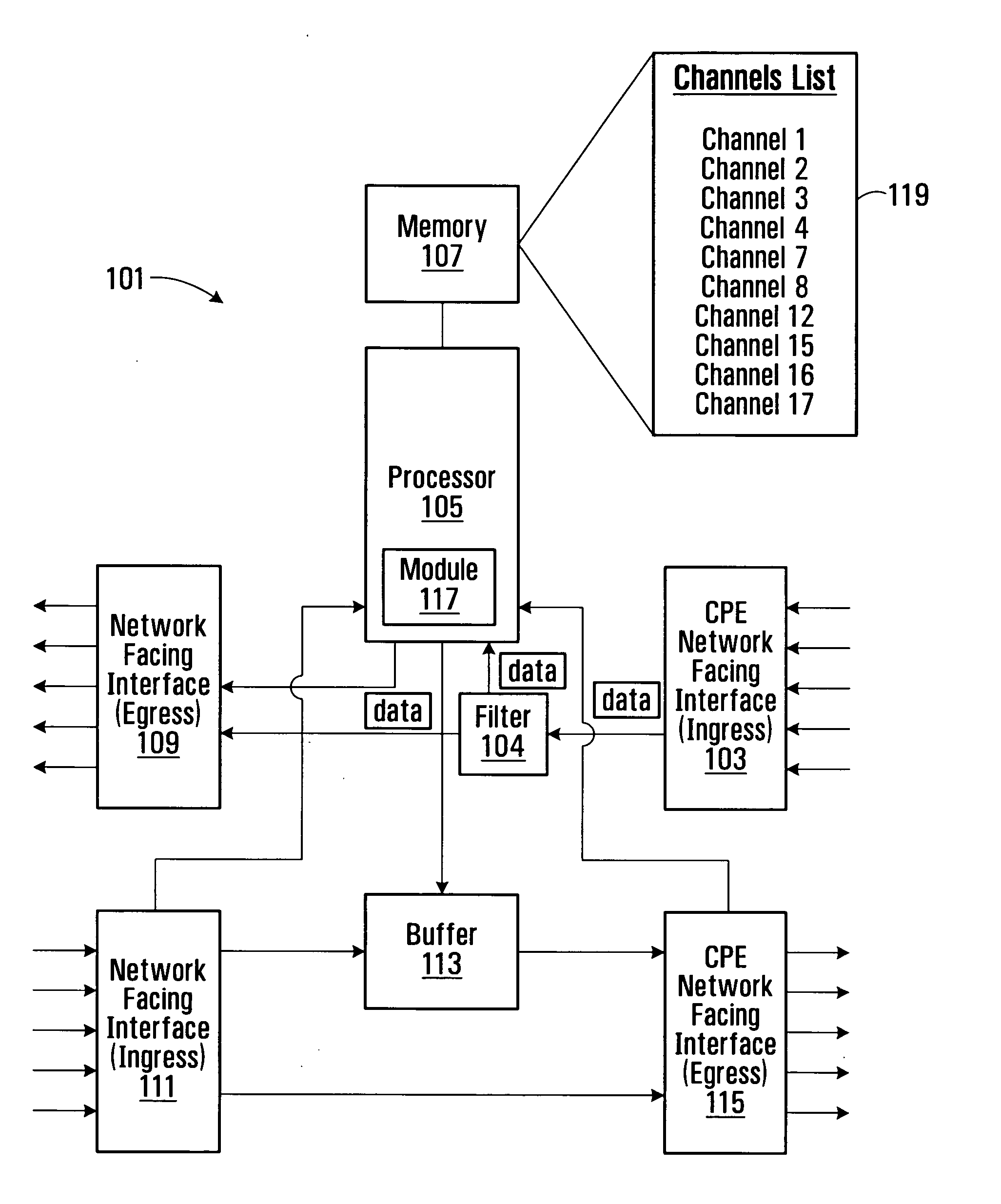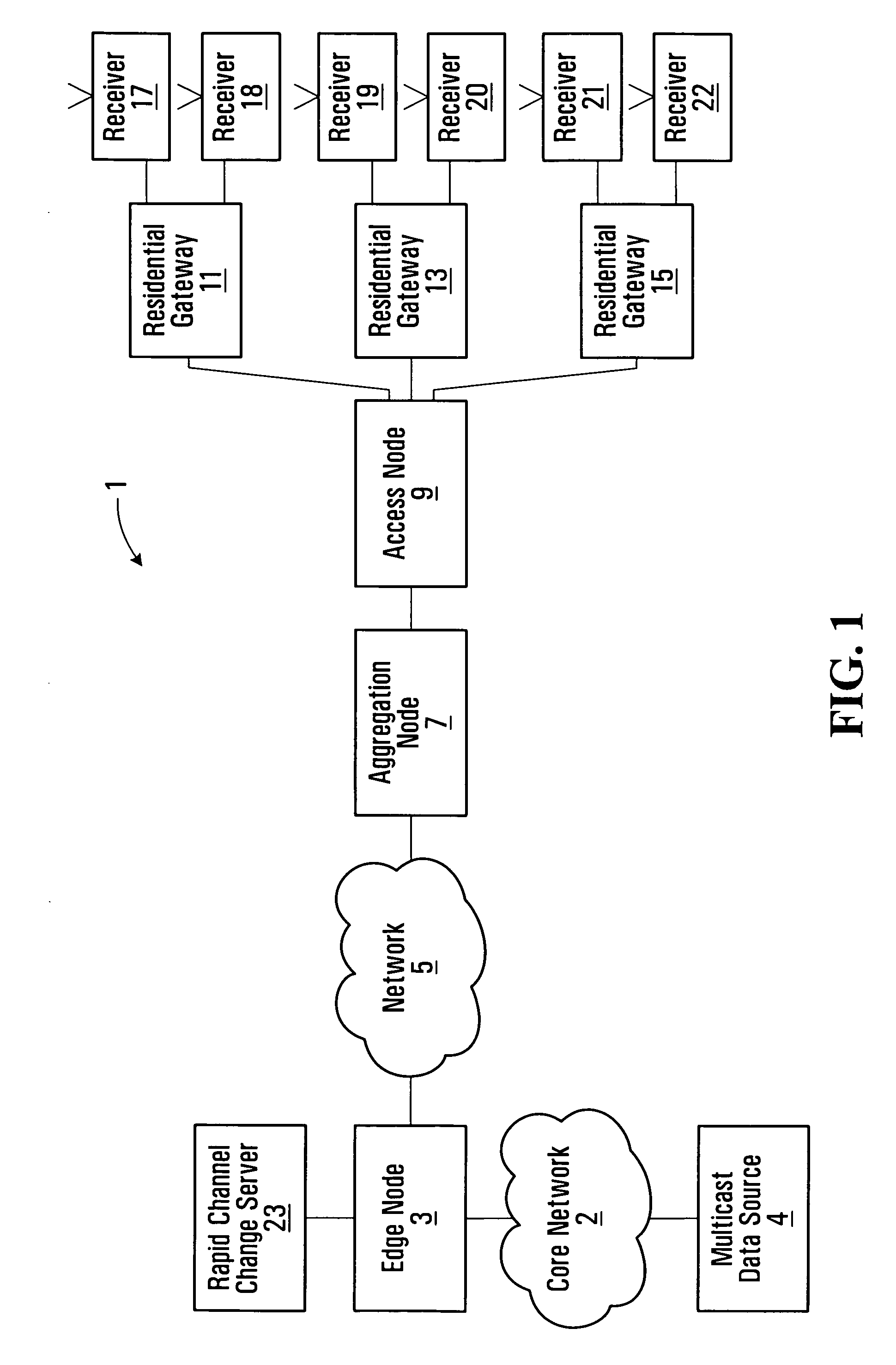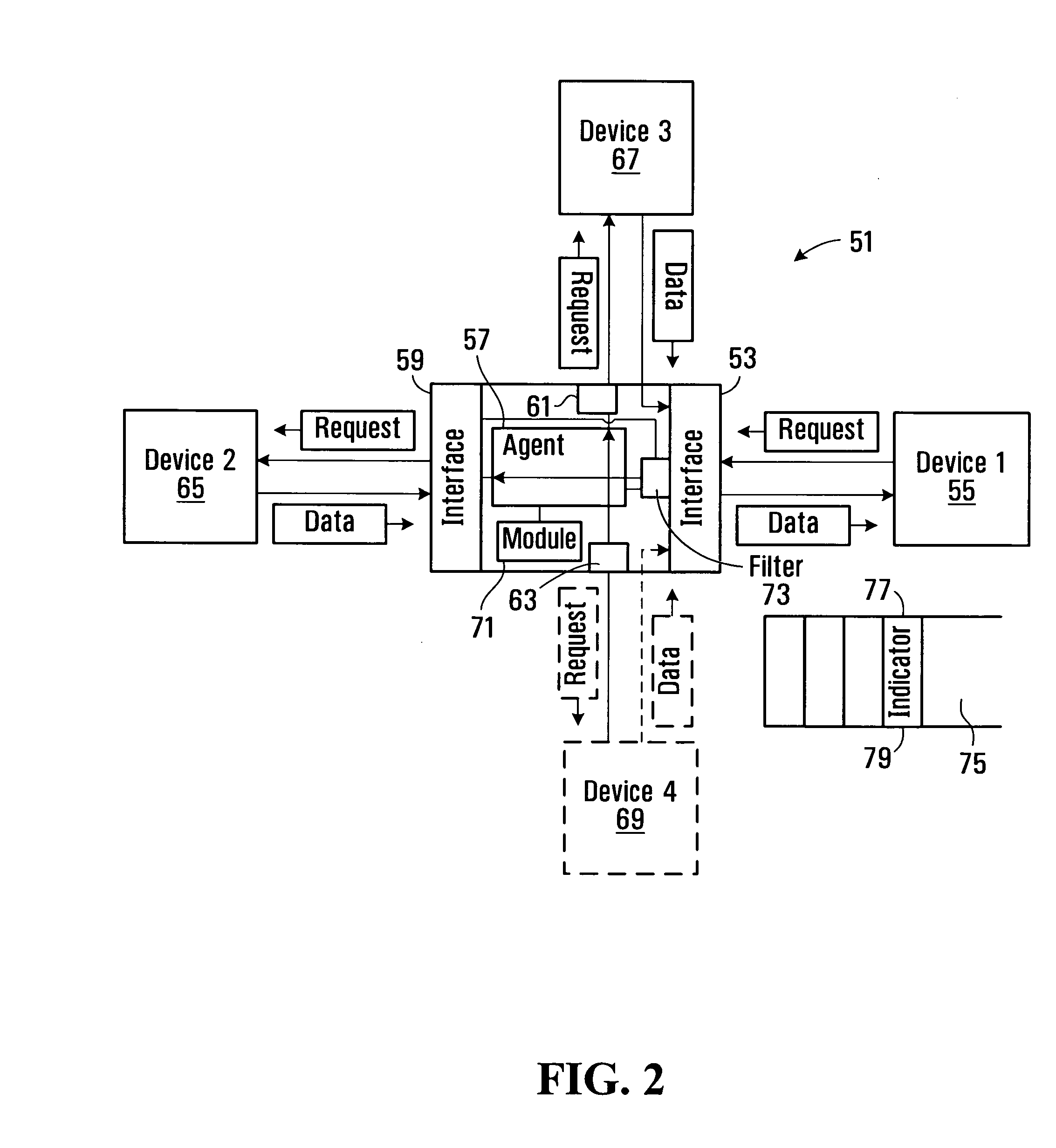Apparatus for managing requests for data in a communication network
a technology for communication networks and apparatus, applied in electrical apparatus, data switching networks, digital transmission, etc., can solve the problems of large amount of network resources required to carry unicast data, and delay or latency that is quite perceptible, so as to reduce the capacity of the predetermined request service device for handling data requests, reduce the traffic load on the network, and reduce the effect of data load
- Summary
- Abstract
- Description
- Claims
- Application Information
AI Technical Summary
Benefits of technology
Problems solved by technology
Method used
Image
Examples
Embodiment Construction
[0048]FIG. 1 shows an example of a network for providing IP services to a number of subscribers. The communication network generally shown at 1 comprises a core network 2 servicing edge nodes 3 (only one shown) for providing IP media services from one or more multicast data sources 4 (only one shown), a network 5 connected to the edge node 3, an aggregation node 7, and an access node 9 connected to the aggregation node and for delivering IP services to a number of different subscriber premises. This is an example of an end to end network, and there may be additional layers of physical devices, though FIG. 1 shows the basic functional blocks. In this example, the customer premises equipment (CPE) includes a residential gateway device 11, 13, 15 and one or more receiver(s) 17, 18, 19, 20, 21, 22 which may for example comprise a set top box for a television set, computer or other end user equipment. The access node may comprise, for example, a DSLAM (digital subscriber line access mult...
PUM
 Login to View More
Login to View More Abstract
Description
Claims
Application Information
 Login to View More
Login to View More - R&D
- Intellectual Property
- Life Sciences
- Materials
- Tech Scout
- Unparalleled Data Quality
- Higher Quality Content
- 60% Fewer Hallucinations
Browse by: Latest US Patents, China's latest patents, Technical Efficacy Thesaurus, Application Domain, Technology Topic, Popular Technical Reports.
© 2025 PatSnap. All rights reserved.Legal|Privacy policy|Modern Slavery Act Transparency Statement|Sitemap|About US| Contact US: help@patsnap.com



